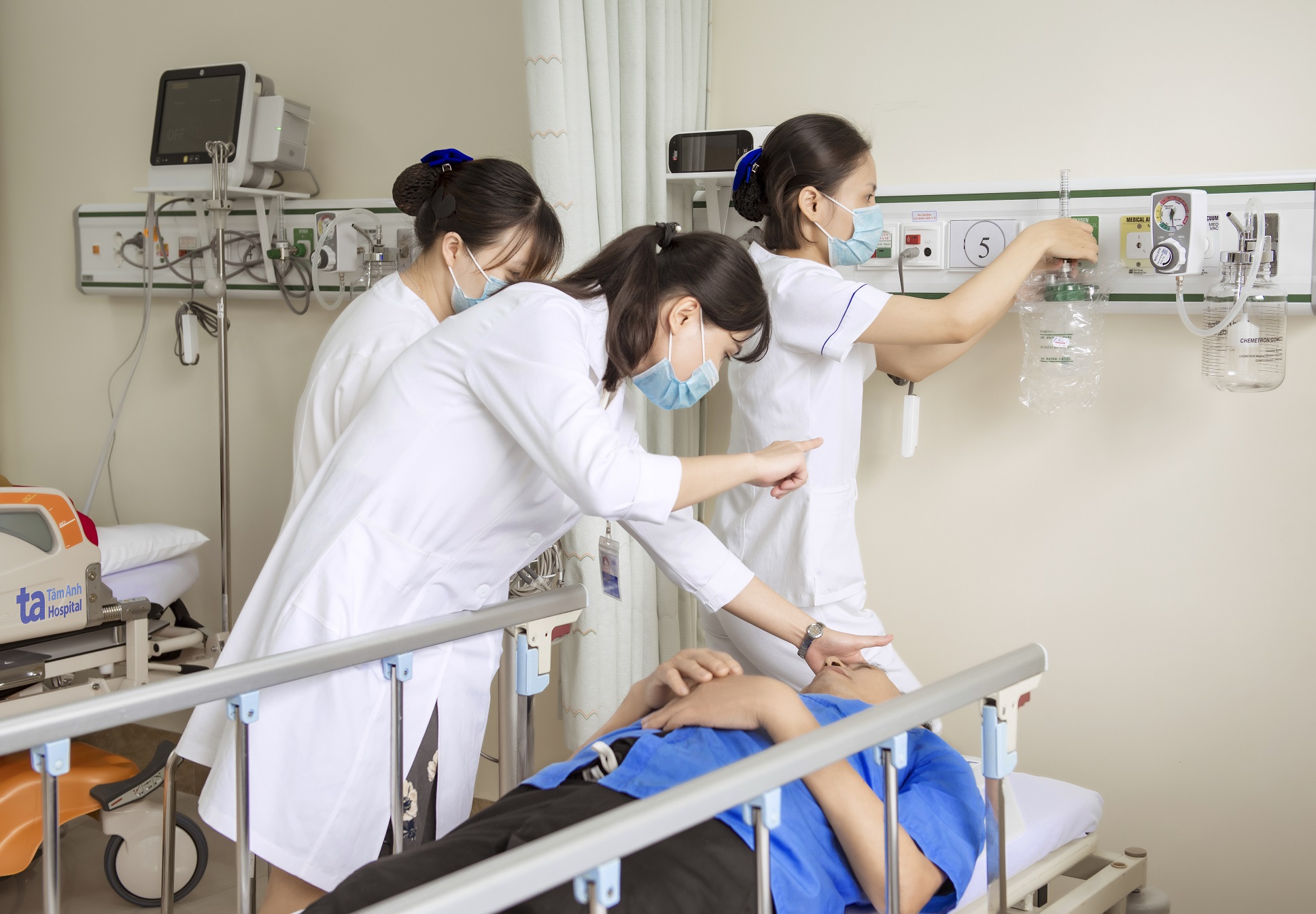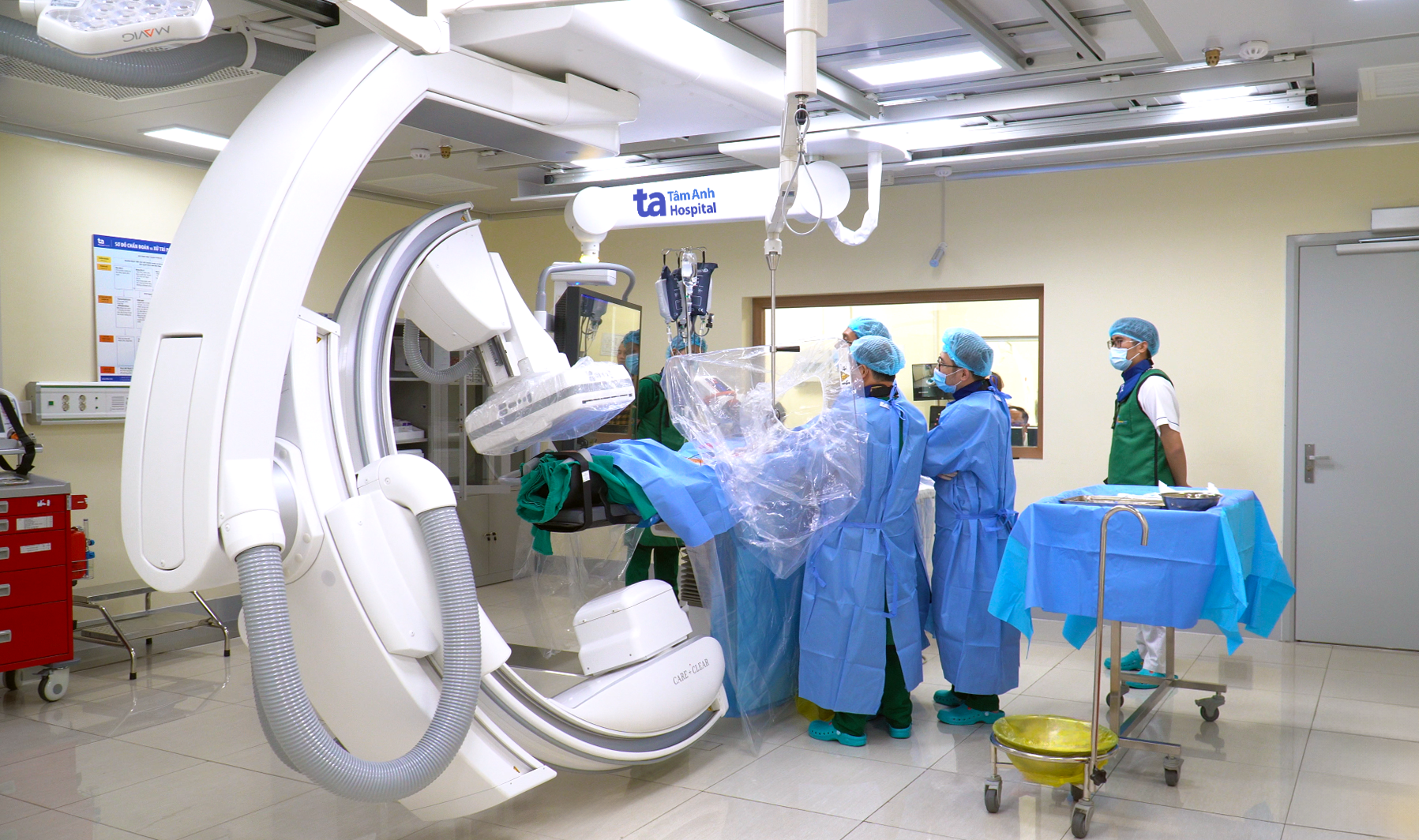Before being hospitalized, Hoang felt exhausted and excessively thirsty. Upon returning home, he went to his air-conditioned room to rest, but suddenly experienced dizziness, progressive limb weakness, and difficulty speaking. His family rushed him to Tam Anh General Hospital in Hanoi, where doctors activated the "Code Stroke" protocol. An MRI scan revealed a cerebral infarction caused by a blockage in the middle cerebral artery. Doctors prescribed thrombolytic medication and performed a thrombectomy using a digital subtraction angiography (DSA) system.
Around the same time, 62-year-old Hanh also arrived at the emergency room. She had collapsed while showering after a day of selling goods outdoors, experiencing dizziness and slurred speech. Doctor Vu Thi Hinh from the Neurology - Stroke Department diagnosed Hanh with an ischemic stroke due to a small vessel occlusion. As she was also treated within the critical "golden period", she received thrombolytic medication and intensive medical care.
Both patients are now out of danger and are undergoing rehabilitation to regain motor skills and speech.
 |
Doctors from the Neurology - Stroke Department providing emergency care to Hoang. Photo: *Tam Anh General Hospital* |
Doctor Hinh explained that high temperatures increase heart rate and body temperature, leading to dehydration, electrolyte imbalances, and blood thickening, which increases the risk of blood clots. Immediately entering a cold air-conditioned room or taking a cold shower after exposure to heat causes a sudden drop in body temperature, constricting blood vessels under the skin and impeding blood flow. "This abrupt temperature change increases blood pressure and puts stress on blood vessels, potentially leading to rupture and stroke," Doctor Hinh stated, adding that individuals with a history of cardiovascular disease, dyslipidemia, hypertension, or advanced age are at higher risk.
In northern Vietnam, recent temperatures have ranged from 35 to 37 degrees Celsius, sometimes approaching 40 degrees, with UV indexes reaching harmful levels. "These high temperatures increase the risk of stroke and negatively impact cardiovascular and respiratory health—another risk factor for stroke," Doctor Hinh explained.
 |
The medical team at Tam Anh General Hospital performing an intervention on a stroke patient. Photo: *Linh Dang* |
Stroke symptoms include facial drooping, slurred speech or inability to speak, unilateral limb weakness, sudden vision loss, severe headache, confusion, and loss of consciousness. If someone displays these symptoms, immediately call emergency services and transport them to a medical facility equipped to handle strokes within the "golden period". This critical timeframe for ischemic stroke treatment is 3 to 4.5 hours from symptom onset, while for hemorrhagic strokes, earlier intervention yields better outcomes.
To prevent heatstroke-induced strokes, Doctor Hinh recommends avoiding going outside during peak heat hours, especially between 10 am and 3 pm. When working outdoors, wear protective clothing, take frequent breaks, and stay hydrated even before feeling thirsty, prioritizing plain water and electrolyte drinks over ice-cold beverages. After work, rest in the shade, dry off sweat, and only enter air-conditioned spaces or shower after a 20-30 minute break.
Individuals with underlying health conditions should carefully manage their blood pressure, blood sugar, and cholesterol levels as advised by their doctor. Taking medication regularly, attending check-ups, and undergoing stroke risk assessments can help detect warning signs early, allowing for proactive lifestyle adjustments to mitigate serious health events.
Linh Dang
*Patient names have been changed.
| Readers can submit questions about neurological conditions here for doctors to answer. |












